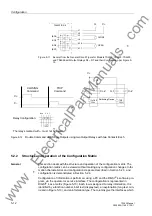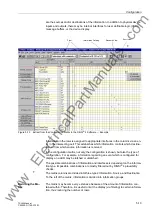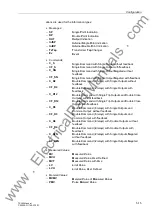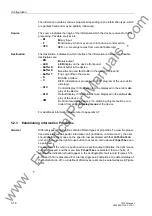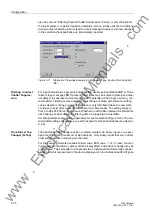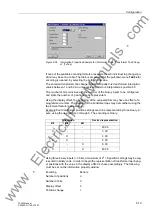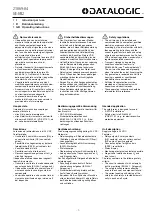
Configuration
5-26
7SJ63 Manual
C53000-G1140-C120-1
Figure 5-28
Window Information Catalog (Example: Different Command Types)
If a command with multiple outputs is configured, all binary outputs required in the ma-
trix for the configuration are automatically defined. If one of these outputs is deconfig-
ured, all other binary outputs associated with the command will be automatically de-
configured.
Please pay attention to the comments and switching examples in Section 5.2.1, par-
ticularly the fixed defined sequence of relay assignments (TRIP before CLOSE).
When configuring commands, the context menu is dependent on the type of com-
mand. In some cases, the selection latched/unlatched is not available. Instead, the al-
ternatives are
;
(configured),
B
(not configured), and
)
(busy flag). The latter means,
independent of the switching direction, an indication is always issued during activation
of the switching device.
For double commands with a common output, a fourth alternative
&
(Common contact)
appears. Using this, the binary output may be defined as the common relay (common
contact). When this is the case, several double commands with common contacts may
be assigned to the same common relay (common contact), thus saving binary outputs.
This assumes the signals at the common outputs have the same potential.
Using the
2EMHFW3URSHUWLHV
dialog window, additional properties for commands
issued to the switching device may be defined. Thus, the operating mode (pulse or
latched) output of a switching command, the seal-in time for pulse commands, the out-
put delay of the command, and feedback monitoring may be set (see Figure 5-29). The
output delay is only relevant for equipment which removes an indication before the
switching is completed.
Example:
Double Command with
2 Contacts (acc. Table 5-1)
www
. ElectricalPartManuals
. com

